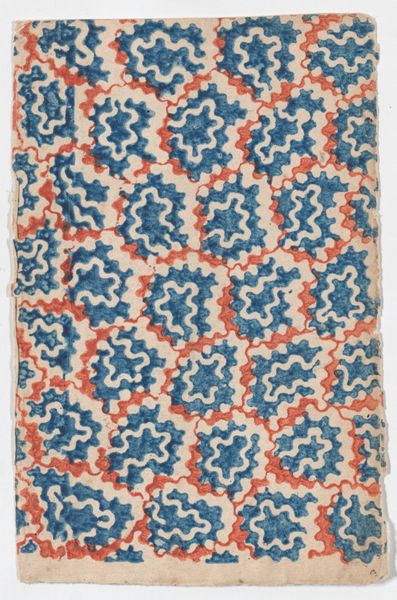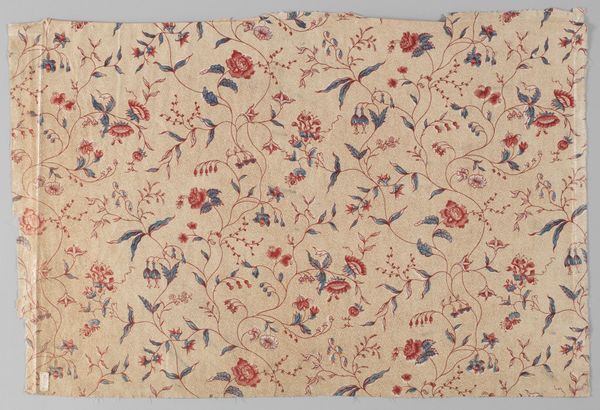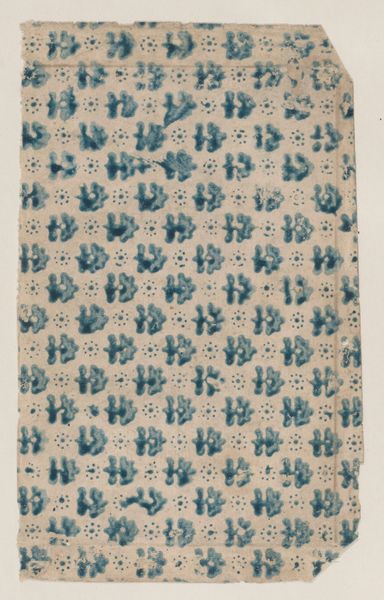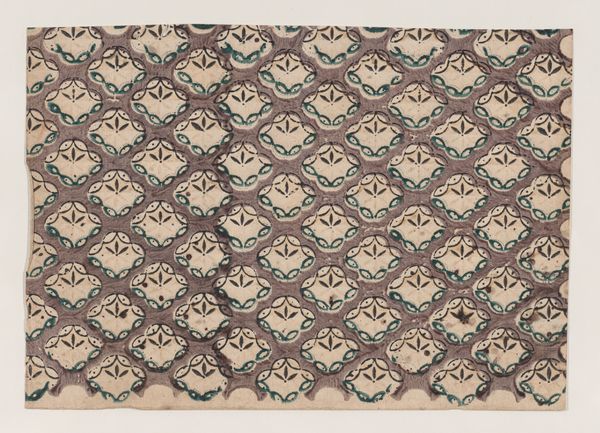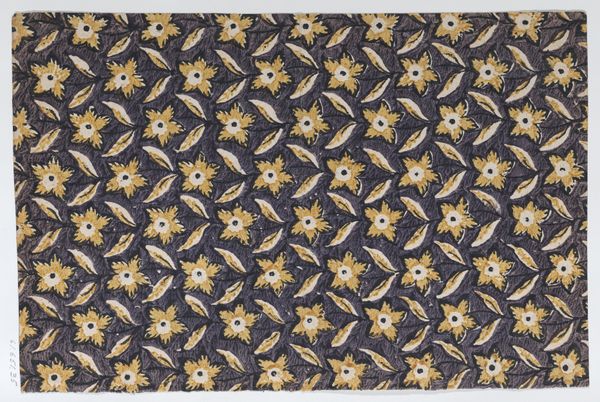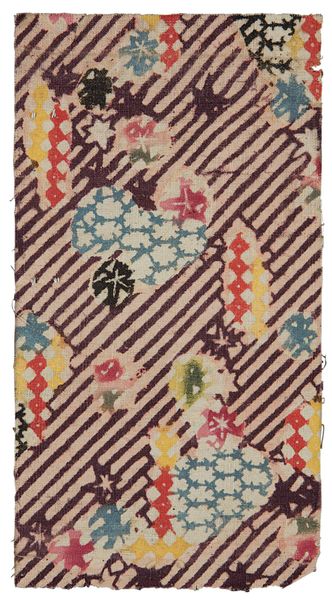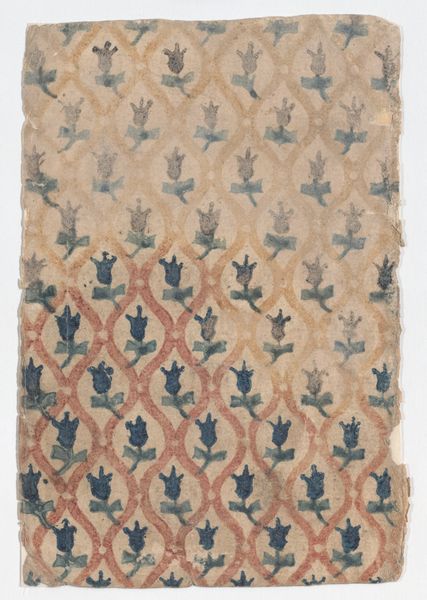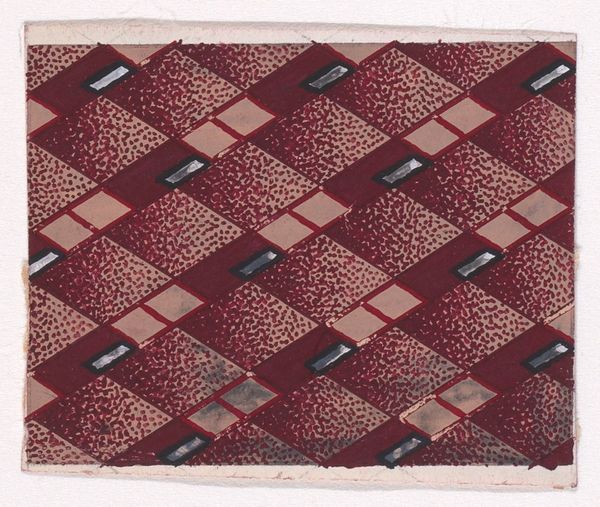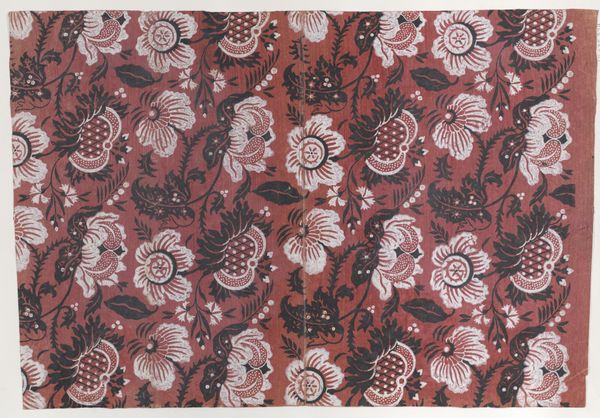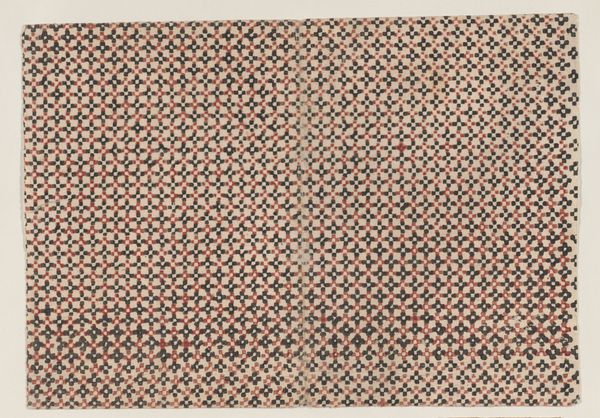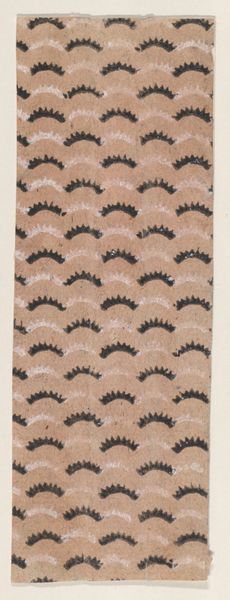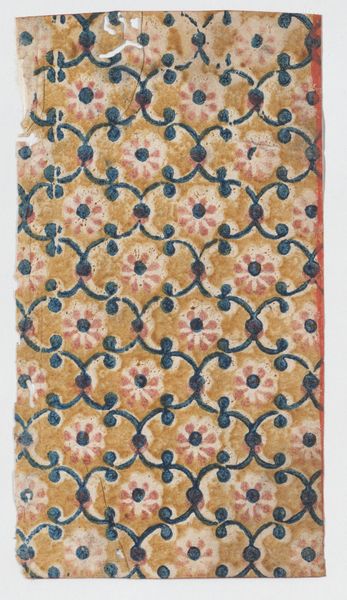
drawing, print, textile
#
drawing
#
organic
# print
#
textile
#
geometric pattern
#
abstract pattern
#
organic pattern
#
geometric
#
textile design
Dimensions: Sheet: 3 7/8 × 6 11/16 in. (9.8 × 17 cm)
Copyright: Public Domain
Editor: So, this intriguing work is called "Sheet with overall abstract pattern," and it’s dated somewhere between 1800 and 1900. It’s anonymous and a drawing and a print for textile purposes, and the design includes various abstract, geometric, and organic elements. The way these forms repeat makes it feel very deliberate. What stands out to you about its cultural or historical significance? Curator: Well, this piece speaks volumes about the democratization of art in the 19th century. The rise of industrial printing meant designs like these could be reproduced widely, influencing fashion and interior decor across different social strata. Consider the societal implications of accessible design. Who had access to this textile? And what statement would incorporating a manufactured design in the home communicate at that time? Editor: That's a fascinating way to consider it – art democratized. Do you think the ambiguity in authorship, being an anonymous piece, plays into that narrative as well? Curator: Absolutely. Anonymity detaches the design from a singular "artistic genius," furthering its association with mass production and popular taste. We must then wonder who had the privilege of anonymity, and the effect that had on their artistry. Editor: That gives me so much to consider, thinking about who got to decide what designs were widespread and trendy. Curator: Exactly. The museum's role isn't just to display beautiful objects but to prompt these conversations about power, access, and aesthetic influence throughout history. What have you taken away from considering this textile pattern? Editor: I think I understand that even seemingly simple patterns can reflect deep historical trends about art and accessibility.
Comments
No comments
Be the first to comment and join the conversation on the ultimate creative platform.

